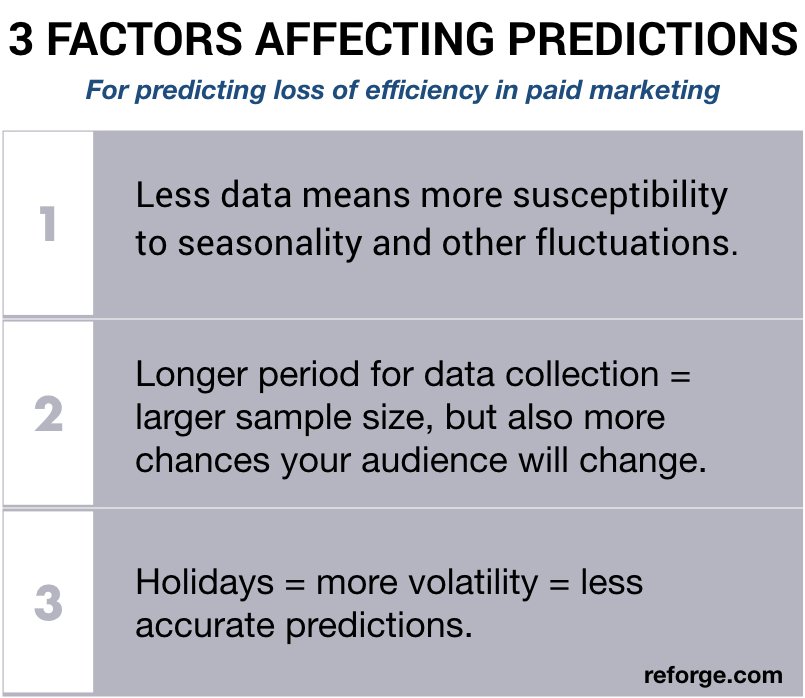
Kicking off with Ad fatigue in banner advertising, this phenomenon has become a significant challenge for marketers navigating the digital landscape. As consumers are bombarded with countless ads daily, their ability to engage with banner advertisements diminishes over time, leading to what we call ‘ad fatigue.’
This decline in engagement is not just a mere annoyance; it can greatly affect the effectiveness of an entire advertising campaign. By understanding the signs and factors contributing to ad fatigue, marketers can better equip themselves to create more engaging and impactful banner ads that resonate with their audiences.
Understanding Ad Fatigue in Banner Advertising
Ad fatigue is a phenomenon that occurs when consumers become increasingly desensitized to advertisements due to overexposure. This gradual decline in effectiveness can significantly impact consumer engagement, leading to lower click-through rates and diminished brand perception. Advertisers must be mindful of this challenge to maintain the effectiveness of their digital campaigns.Ad fatigue manifests in various ways, often resulting in a noticeable drop in engagement metrics.
When a target audience sees the same banner ad repeatedly, they may start to ignore it altogether or develop a negative association with the brand. Understanding the signs and symptoms of ad fatigue is crucial for marketers looking to optimize their campaigns. Common indicators include decreased click-through rates, increased bounce rates, and negative feedback on social media or other platforms.
Brands might find that their return on investment diminishes as consumer interest wanes.
Factors Contributing to Ad Fatigue in Banner Advertising
Several factors contribute to the onset of ad fatigue in banner advertising, which can hinder campaign success. Recognizing these elements helps advertisers strategize effectively.
- Repetition of Ads: Continuous exposure to the same ads can lead to diminishing returns, as audiences become accustomed to the message and visuals, ultimately tuning them out.
- Target Audience Saturation: When ads are shown excessively to a limited audience, the impact diminishes. It is essential to refresh targeting strategies to reach new potential customers.
- Poor Ad Quality: Low-quality creatives, whether in terms of design or message clarity, can contribute to disengagement. Ads that fail to resonate with the audience are more likely to be ignored.
- Inadequate Frequency Capping: Without proper frequency capping, ads may be served too often, overwhelming viewers and leading to negative brand sentiment.
- Irrelevant Content: Ads that do not align with the interests or needs of the audience will fall flat. Ensuring that content is tailored to specific demographics can help maintain engagement.
Consequently, monitoring these factors is essential for advertisers aiming to keep their campaigns fresh and appealing. Implementing solutions such as rotating creatives, diversifying targeting parameters, and regularly analyzing performance metrics can aid in reducing ad fatigue and enhancing overall campaign effectiveness.
“The key to overcoming ad fatigue lies in continually evolving your approach, ensuring that your message remains relevant and engaging.”
Strategies to Combat Ad Fatigue

Ad fatigue is a common challenge in the world of digital marketing, particularly in banner advertising. Brands often find that their audience becomes desensitized to repetitive ads, leading to diminished engagement and conversion rates. To overcome this hurdle, it is crucial to implement fresh strategies that breathe new life into ad campaigns.One effective approach to combat ad fatigue is to regularly refresh banner ad visuals and messaging.
This not only captures the attention of your target audience but also keeps the content relevant and engaging. Here are some methods to consider:
Methods to Refresh Banner Ad Visuals and Messaging
Updating your banner ads can significantly enhance their effectiveness. The following strategies can help maintain audience interest:
- Varying color schemes: Changing the color palette can evoke different emotions and attract different segments of your audience.
- Incorporating seasonal themes: Tailoring ads to reflect seasonal events or holidays can make your content more timely and engaging.
- Using new imagery or graphics: Regularly updating visuals helps combat monotony. Consider using high-quality images, illustrations, or animations that resonate with your audience.
- Changing ad formats: Experimenting with different ad sizes and formats, such as GIFs or video banners, can draw attention in a crowded space.
- Modifying messaging: Refresh the call-to-action (CTA) and primary copy regularly to reflect trending topics or audience interests.
A/B testing plays a critical role in identifying ad fatigue and determining the effectiveness of different variations of banner ads. By comparing two or more versions of an ad, marketers can gain insights into audience preferences and identify which elements resonate most effectively.
The Importance of A/B Testing in Identifying Ad Fatigue
A/B testing allows brands to make data-driven decisions based on real user interactions, which is essential in combating ad fatigue. This method involves presenting different design or messaging options to separate segments of your audience to see which performs better.
“Data-driven decisions are vital in maximizing ad performance and minimizing the effects of ad fatigue.”
By systematically analyzing performance metrics such as click-through rates (CTR), conversion rates, and engagement levels, marketers can pinpoint exactly when fatigue sets in. This insight informs when it’s time to refresh or overhaul banner ads.
Examples of Successful Campaigns That Overcame Ad Fatigue
Several brands have successfully navigated the challenges of ad fatigue through innovative strategies and fresh campaigns. Noteworthy examples include:
- Coca-Cola’s “Share a Coke” Campaign: By personalizing their product and using unique names on bottles, Coca-Cola was able to create a buzz and foster engagement, leading to a revitalization of interest in their advertising.
- Nike’s “Just Do It” Refresh: Nike continually updates their messaging within this iconic tagline, introducing motivational campaigns that resonate with current social movements and athletic trends.
- Old Spice’s “The Man Your Man Could Smell Like”: This campaign drastically altered the brand’s image through humor and creativity, breaking through the noise with engaging content that revitalized consumer interest.
The Role of Banner Advertising in Digital Marketing

Banner advertising plays a crucial role in the broader landscape of digital marketing, serving as a vital touchpoint between brands and consumers. With the rise of online interactions, banners have become an essential tool for driving traffic and brand awareness. Their visual appeal and strategic placement on web pages allow businesses to engage potential customers effectively. This section dives into how banner ads integrate with various internet marketing strategies, emphasizing the importance of elements like domain names and their relations to email marketing effectiveness.
Integration with Broader Internet Marketing Strategies
Banner advertising seamlessly integrates with other digital marketing strategies, creating a cohesive experience for users. It complements search engine marketing (SEM) by providing visual reinforcement of messaging while users browse other sites. By utilizing retargeting strategies, banners can reach users who have previously interacted with a brand, reminding them of their interest and prompting a return visit. The combination of banner ads with social media marketing enhances visibility and engagement, as users are likely to share appealing banners, further increasing their reach.
Significance of Domain Names in Banner Ads
The effectiveness of a banner ad is often influenced by the associated domain name. A well-chosen domain name contributes to brand recognition and credibility, helping to garner consumer trust. When users see a banner ad that directs them to a familiar or easy-to-remember domain, they are more likely to click through. For instance, a domain name that reflects the brand’s identity or is concise and relevant can significantly improve click-through rates.
An effective domain name acts as a bridge, facilitating the transition from the ad to the website, ensuring that the user experience is smooth and engaging.
Relationship Between Banner Advertising and Email Marketing Effectiveness
Banner advertising and email marketing complement each other to enhance overall campaign effectiveness. Banners can be strategically utilized within email campaigns as eye-catching visuals that encourage recipients to take action, such as clicking through to a website or landing page. Incorporating banner ads in emails can lead to higher engagement rates, as visually appealing content tends to capture attention and drive clicks.
Furthermore, insights from banner ad performance can inform email marketing strategies, enabling marketers to tailor content based on what resonates most with their audience. For instance, understanding which banner designs lead to higher engagement can guide the visual elements used in subsequent email marketing efforts, creating a more cohesive messaging strategy.
Conclusion
In summary, recognizing and addressing ad fatigue in banner advertising is crucial for maintaining consumer engagement and maximizing the effectiveness of digital marketing efforts. By refreshing visuals, testing different strategies, and learning from successful case studies, marketers can turn the tide on ad fatigue and continue to connect with their audience in meaningful ways.
Query Resolution
What is ad fatigue?
Ad fatigue refers to the decline in consumer engagement and effectiveness of advertisements when the same ads are shown too frequently.
How can I tell if my ads are suffering from ad fatigue?
Signs include decreased click-through rates, lower engagement levels, and increased negative feedback from users.
What are effective strategies to combat ad fatigue?
Refresh ad designs, rotate ad copy, use A/B testing, and analyze performance metrics to identify what’s working.
What role does A/B testing play in managing ad fatigue?
A/B testing helps identify which ad variations are most effective, allowing marketers to continually optimize their campaigns.
Can ad fatigue affect brand perception?
Yes, excessive exposure to the same ads can lead to negative feelings towards a brand, so it’s important to keep ads fresh.





